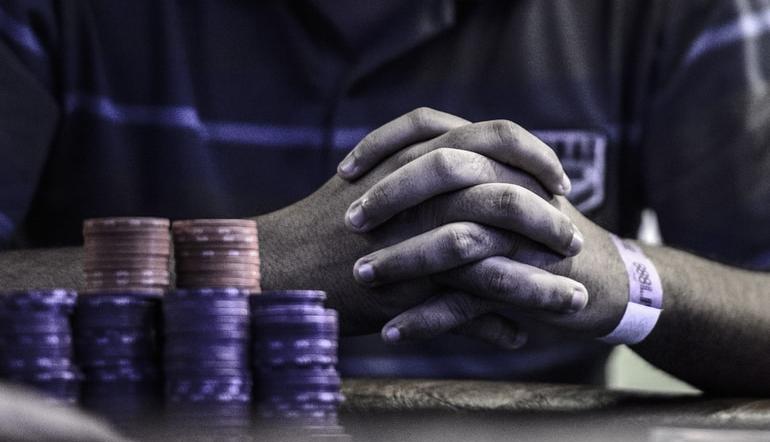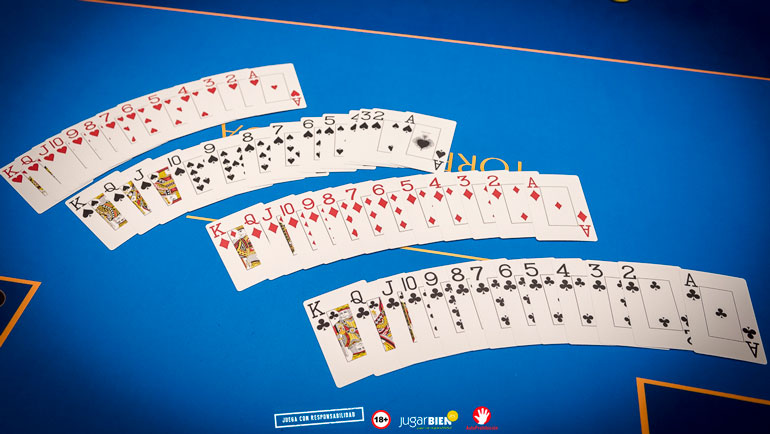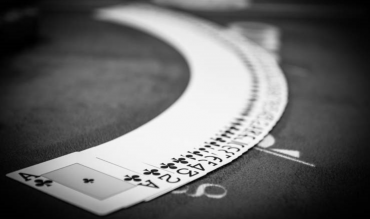Poker has been associated with gambling forever. It was played in gambling houses in Europe and traveled across the Atlantic Ocean and made it to the Old West of America.
The most popular poker game is Texas Hold’em. The variations are many, and because of its popularity variations of poker have been adapted to be played as a casino table game. One such variation is Casino Hold’em where the players play against the casino instead of other players. Here we will discuss the difference between the two.
Texas Hold-em
The rules of Texas Hold’em are as follows:
- A 52-card deck is used. All cards count as their poker value(s).
- One player is the dealer and the dealer rotates every hand.
- The player to the dealer's left must make a "small blind" bet. The player to the left of the small blind must make a "big blind" bet.
- Two cards are dealt down to each player, starting with the person to the dealer's left.
- The player to the left of the big blind must either call or raise the big blind bet. The play in turn will go around the table according to normal poker rules.
- Three community cards will be dealt face up in the center of the table. This is called the "flop."
- Another round of betting will ensue, starting with the player to the dealer's left.
- A fourth community card will be dealt face up in the center of the table. This card is called the "turn."
- Another round of betting will ensue, starting with the player to the dealer's left.
- A fifth and final community card will be dealt face up in the center of the table. This card is called the "river."
- Another round of betting will ensue, starting with the player to the dealer's left.
- Each player still in the game at the end will determine the highest poker value among his own two cards and the five community cards. It is NOT a requirement that the player use both of his own cards. The player with the hand of highest poker value shall win.
Following are the hand rankings:
- Straight flush: Five consecutive and suited cards. For example 5 , 6 , 7 , 8 , 9 .
- Four of a kind: Four cards of the same rank, plus any fifth card. For example Q , Q , Q , Q ,4 .
- Full house: Three of a kind and a pair. For example 6 , 6 , 6 , J , J .
- Flush: Any five cards of the same suit, except for a higher ranking straight flush. For example A , Q , 8 , 4 , 3 .
- Straight: Five consecutive cards, except for a higher ranking straight flush. For example 8 , 9 , 10 , J , Q .
- Three of a kind: Three cards of the same rank, plus any other two cards. For example 5 , 5 , 5 , Q ,2 .
- Two pair: Two pairs, plus any fifth card. For example 8 , 8 , 2 , 2 ,Q .
- Pair: A pair and any other three cards. For example 7 , 7 , 2 , 5 ,A .
- High Card: Any five cards that do not form any higher poker hand. A king high hand for example might be K , Q , 7 , 5 ,4 .
The house may set the betting rules. There are three main types. A "structured" game features raises of specified amounts. For example a "$3/6 game" would mean that raises after the deal and flop are $3, and after the turn and river are $6.
There is usually a limit to the number of raises a player may make, typically three. A "pot limit" game has structured minimum raises but the maximum raise may be anything up to the amount in the pot at the time the raise is made. A "no limit" game also has structured minimum raises but there is no maximum raise.

Strategy
There is no optimal strategy for Texas Hold’em.
Casino Hold-em
Casino Hold 'Em is a poker variation, similar to Texas Hold-em.
Rules
- Play begins with each player making an Ante wager. There is also an optional Progressive Jackpot side bet.
- The dealer gives the player and himself two hole cards and three community cards face up on the table.
- Each player must decide to either fold or call. If the player folds, then he gives up his cards and his Ante bet. If the player calls, then the Call bet must be equal to two times the Ante bet.
- The dealer will then deal two more community cards, for a total of five. The dealer will then turn over his own two cards.
- Both hands shall be scored according to the highest poker value of the two hole cards and five community cards.
- The dealer must have a pair of fours or better to qualify. If the dealer does not qualify then the Ante will pay according to the Ante pay table below and the Call bet will push.
- If the dealer qualifies and beats the player, then the player will lose both the Ante and Call.
- If the dealer qualifies and the player beats the dealer then the Ante will pay according to the Ante pay table below and the Call bet will pay 1 to 1.
- If the dealer qualifies and the player ties the dealer then both Ante and Call bets will push.
- The Progressive Jackpot side bet pays based on the player's final seven card hand only, even if the player folded or loses to the dealer. More on this bet at the bottom of the page.

Strategy
There is no way to quantify an optimal strategy for this game since the optimal decision for each hand is based on the combination of all 7 cards (two personal cards and five board cards) dealt.
A computer program can easily deal with the calculations required to make the correct play in any particular hand, it is difficult to make a set of general rules which can be memorized. The optimal strategy player will raise 82% of the time. So only in the worst 18% of hands should the player fold.
House edge
The house edge of Casino Hold'em excluding the side bet (that is, the percentage of each bet the casino will on average win, assuming perfect play on the part of the player) varies depending on the specific rules. But the most common pay tables result in a house edge varying from just below 2% to around 2.5%. Using the ante pay table below, the house edge is 2.16%.
Ante-Win pay table
In Casino Hold'em the player not only wins a standard 1 to 1 sum if they have the stronger hand, but for rare hands a higher additional amount.
Bonus Pay Tables
| Hand | Table 1 | Table 2 | Table 3 | Table 4 |
| Royal flush | 20 | 25 | 100 | 100 |
| Straight flush | 20 | 25 | 20 | 49 |
| 4 of a kind | 10 | 12 | 10 | 17 |
| Full house | 3 | 3 | 3 | 3 |
| Flush | 2 | 2 | 2 | 2 |
| All other | 1 | 1 | 1 | 1 |


